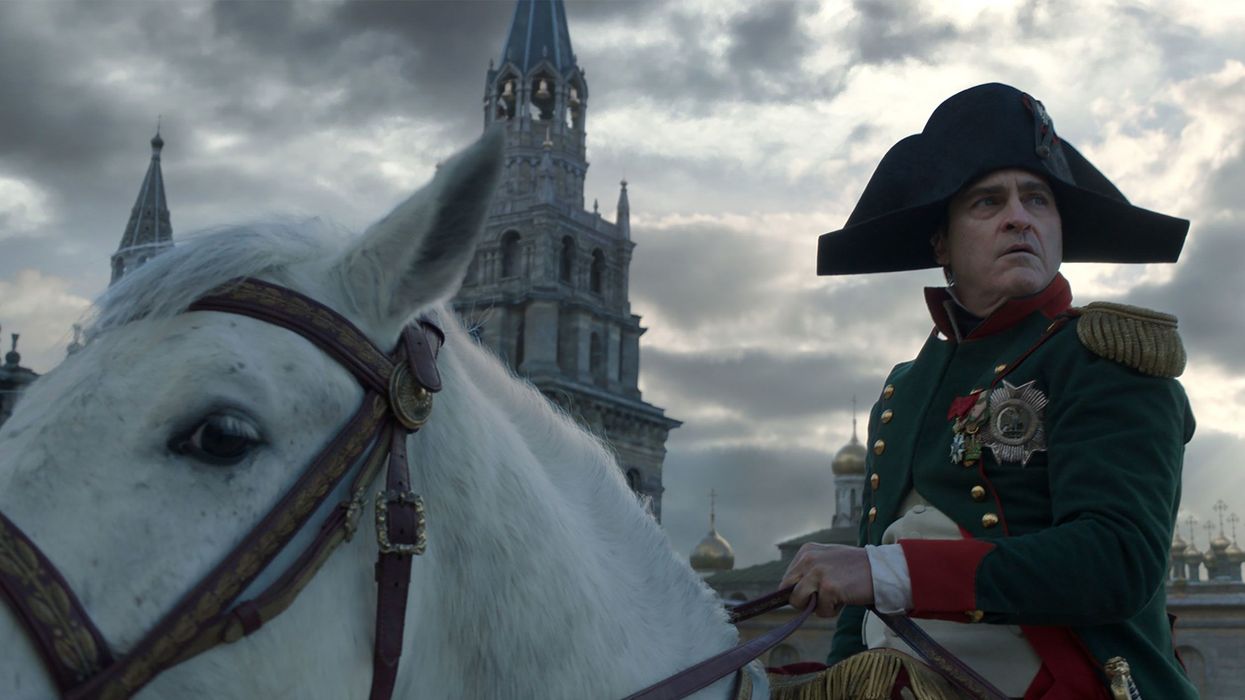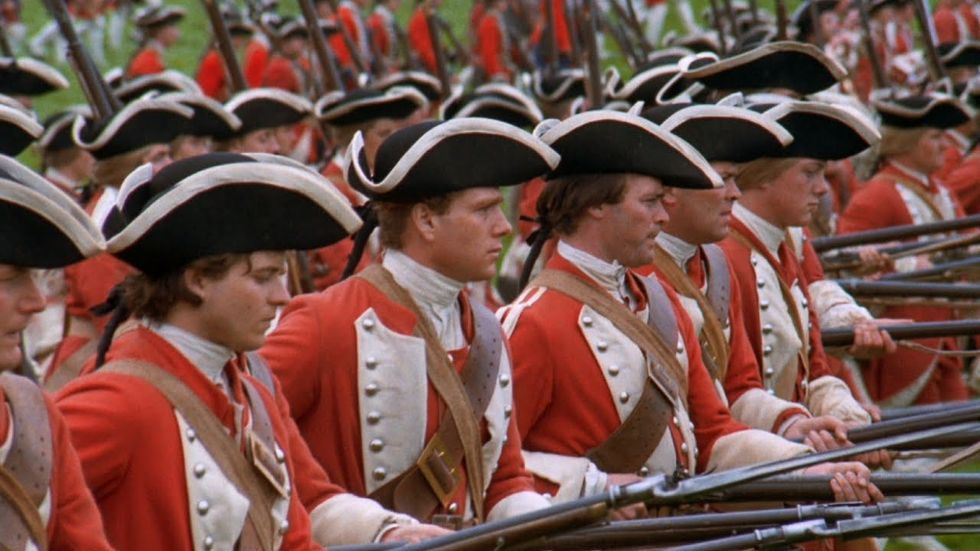How To Write a Historical Drama Screenplay (Free Beat Sheet Template)
It's all about research, worldbuilding, and execution.

'Napoleon'
Historical dramas and epics are some of the most fun movies to see in the theater. They always feel so large and so sweeping. They transport you somewhere and introduce you to people who have shaped the world we have today via actions in the past.
Creating a captivating historical feature film screenplay requires a unique blend of creativity, research, and adherence to storytelling principles. That's why I wanted to work on historical genre screenplays with you today.
In this guide, we'll delve into the art of crafting a compelling historical screenplay that not only respects the past but also resonates with modern audiences. We'll explore essential tropes that add depth to your narrative and provide you with a beat sheet template to keep your script on track.
If that sounds good, then keep reading.
The Power of History in Film
 'Gladiator'
'Gladiator'Credit: DreamWorks Distribution
Whether it's a biopic or historical fiction or just a movie that takes place in the past, feature films have the incredible ability to transport audiences to different eras, immersing them in the sights, sounds, and emotions of the past.
As someone who has written a few ideas like this, I can tell you that these films offer a window into history while tackling universal themes that continue to resonate today.
They also give you the freedom to explore anything that piques your interest.
Whether it's exploring personal stories against a backdrop of major events or shedding light on lesser-known historical figures, the possibilities are endless.
You just have to choose what to write about...
How To Pick a Period in History To Write About

Greta Gerwig on the set of 'Little Women'
Credit: Sony Pictures Releasing
The first step in crafting a captivating historical screenplay is selecting a specific time period, event, or figure that resonates with you. Whether it's a pivotal historical event or a lesser-known story, your passion for the subject will infuse authenticity and depth into your screenplay.
As always, write what you care about. Don't pick someone because they're famous or because you think it's marketable. Pick stuff you really want to explore and will enjoy immersing yourself within.
These kinds of films have to be authentic. Devote ample time to thorough research. Dive into primary and secondary sources, such as books, journals, letters, and artifacts from the chosen era. Museums, libraries, and online databases can provide a wealth of information to enrich your understanding of the historical context.
Nothing is more fun than going to a museum with a notebook and just jotting down scene ideas and character ideas and taking relevant photos. It's wonderful.
When I'm picking a historical topic, I try to identify timeless themes like love, power, resilience, and justice that will resonate with modern audiences.
You want to find a powerful connection between the past and the present.
Once you've done the research, it's time to write the screenplay.
Balance Fact and Fiction

'Barry Lyndon'
Credit: Warner Bros.
This might shock you, but a lot of times historical movies in Hollywood are not 100% factual.
The thing is, your writing needs to be entertaining above all else. That means while historical accuracy is crucial, creative liberties are often necessary to enhance the narrative.
Balancing authenticity with storytelling allows you to create a compelling cinematic experience while staying true to the essence of the past.
Worldbuilding in History

Steven Spielberg, on the set of 'Lincoln'
Credit: 20th Century Studios
Worldbuilding is one of my favorite aspects of writing. You get to transport your audience to another time through detailed descriptions of settings, costumes, and atmospheres.
Put all this stuff in the action lines. Describe the world, tell us about the garb, drop in little facts. Engaging visuals immerse viewers in the historical world and enhance their connection with the story.
Historical Film Beat Sheet Template
 'The Assassination of Jesse James by the Coward Robert Ford'
'The Assassination of Jesse James by the Coward Robert Ford'Credit: Warner Bros.
A beat sheet is a roadmap that outlines the key plot points and character arcs of your screenplay. While the structure of a historical feature film screenplay mirrors that of any other genre, the historical setting adds unique layers to your storytelling.
I took the liberty of drawing up a beat sheet that you can use to brainstorm your historical movie idea.
- Introduction to the Era: Introduce the time, place, and major historical events that will frame your story.
- Meet the Protagonist: Present your main character's everyday life, aspirations, and flaws, while hinting at their connection to the upcoming historical events.
- Inciting Incident: Launch the story with a pivotal event that disrupts the protagonist's life and propels them toward the central conflict.
- Historical Event Integration: Seamlessly weave your characters' arcs into the historical events, offering an authentic perspective on how ordinary lives are impacted.
- Rising Tensions: Escalate conflicts and obstacles, forcing the protagonist to evolve as they confront challenges.
- Forbidden Love/Complicated Relationships: Introduce romantic interests or intricate relationships that mirror the societal tensions of the era.
- Midpoint Twist: Reveal a significant turn of events that reshape the protagonist's goals and strategies.
- Moment of Doubt: Push the protagonist to the brink of giving up, testing their commitment to their goals.
- Climactic Historical Event: Build toward a climactic scene where historical events and personal stakes collide.
- Resolution and Transformation: Conclude the protagonist's arc, showcasing their growth and reflecting on how historical events have impacted them.
- Legacy: Highlight the lasting impact of the protagonist's actions on history and the world around them.
Crafting a historical feature film screenplay is a challenging yet rewarding endeavor. By incorporating essential historical tropes and utilizing a well-structured beat sheet template, you can create a narrative that bridges the gap between past and present, captivating audiences with its depth and resonance.
Remember, the key lies in striking a balance between historical accuracy and engaging storytelling, ensuring that your screenplay both educates and entertains.
Now, go get writing.
- 4 Ways to Help You Write Your Next Original Screenplay ›
- How to Write a Narrative Podcast ›
- What Is a Narrative in Movies and TV? (Definition and Examples) ›
- Reports of Warner Bros. Sell to Another Studio ›











